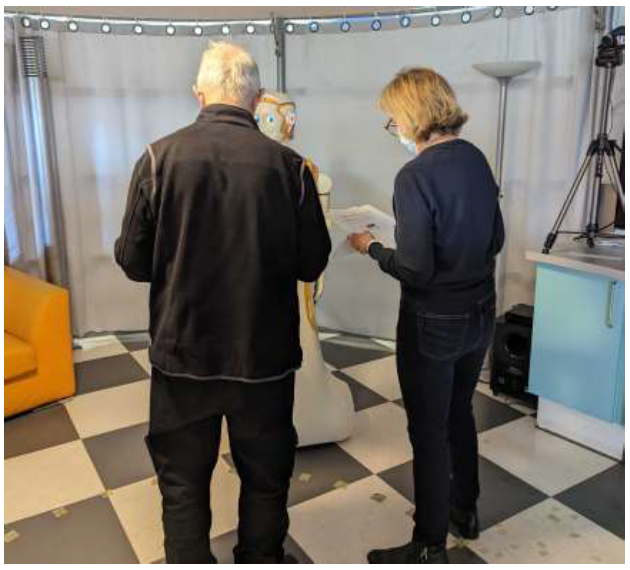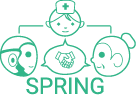Within the framework of the SPRING project, five use cases for a socially assistive robot in a hospital context are developed.
a) The robot provides a reception or welcoming of the hospital users
b) The robot delivers information and reminders on how to have safe social interactions
c) The robot provides assistance to patients throughout the care process
d) The robot provides orientation and guidance related to the hospital services
e) The robot provides entertainment activities for persons who attend the hospital
With the aim of assessing the relevance and effectiveness of these use cases, we are conducting experimental research involving human subjects in relevant and realistic environments. Two experimental frameworks were therefore defined to meet the needs of the project.
Here we describe the main results from the intermediate experiments that have been conducted between April 2022 and March 2023 within the framework of the SPRING project in a simulated-relevant environment.
All details are available within D1.5 at our results page.

The three intermediate evaluations allowed the identification of several arguments explaining the good acceptability observed of the SPRING robot in the hospital context. The lack of staff appears to be a major driving force behind the use of socially assistive robots in hospitals. User feedback showed that the robot’s usefulness could go beyond information and entertainment which, in itself, was considered a very useful use case if the robot shares clear and accurate information.
The robot could assist disabled people to walk or bedridden patients who need help, or who do not wish to “disturb” health professionals for a minor request, such as bringing a glass of water or the TV remote control, for example. In this sense, the robot could help counteract the discomfort of disturbing the staff, and be useful for small tasks. Some participants mentioned that the robot could be useful for maintaining the dignity of the patients. For example, one participant said that in case he would be disabled and bedridden, he would be more comfortable and less embarrassed with a robot doing the changing of diapers than with an aid nurse. These statements are perfectly aligned with the observed quantitative results from the acceptability e-scale as the perceived usefulness was one of the highest scoring items in every wave of evaluation.


